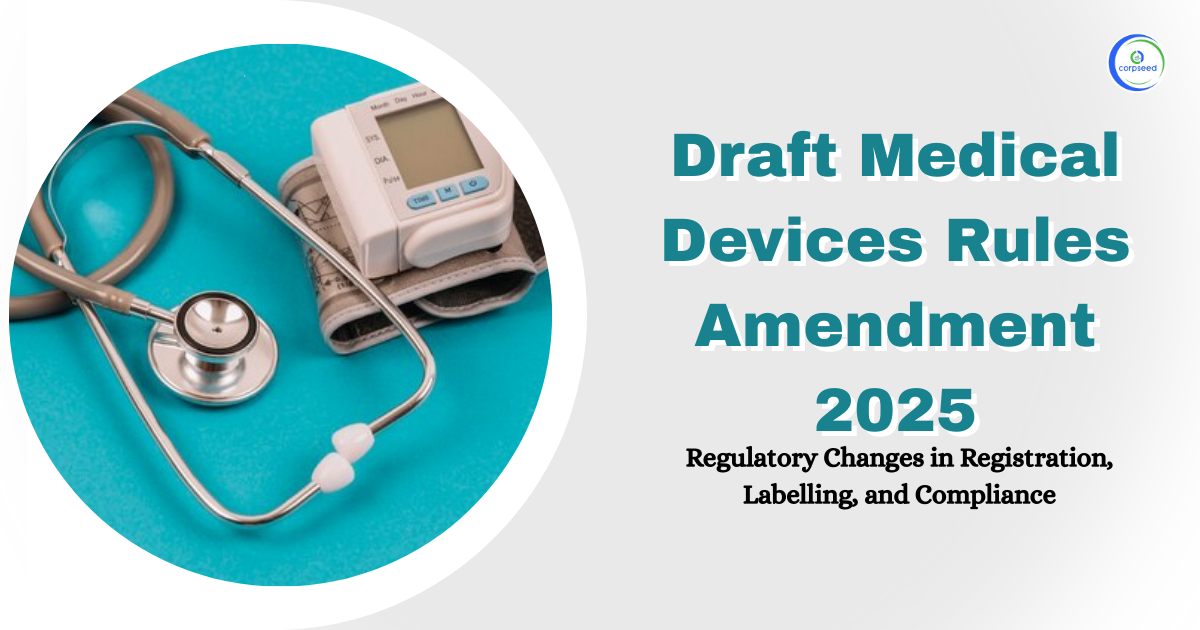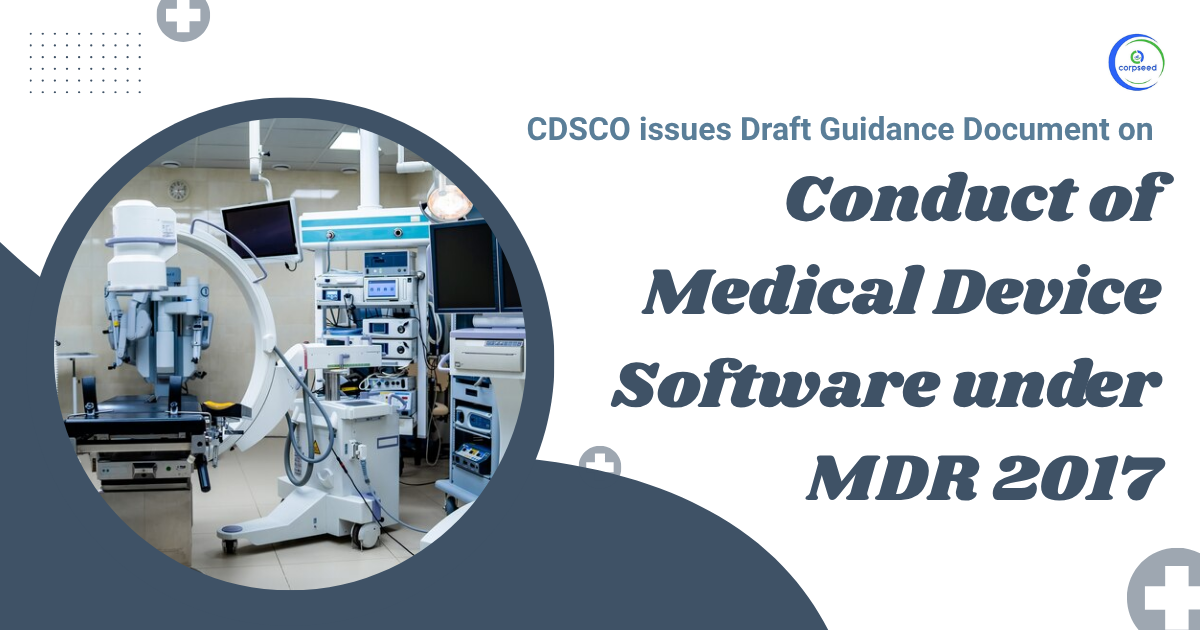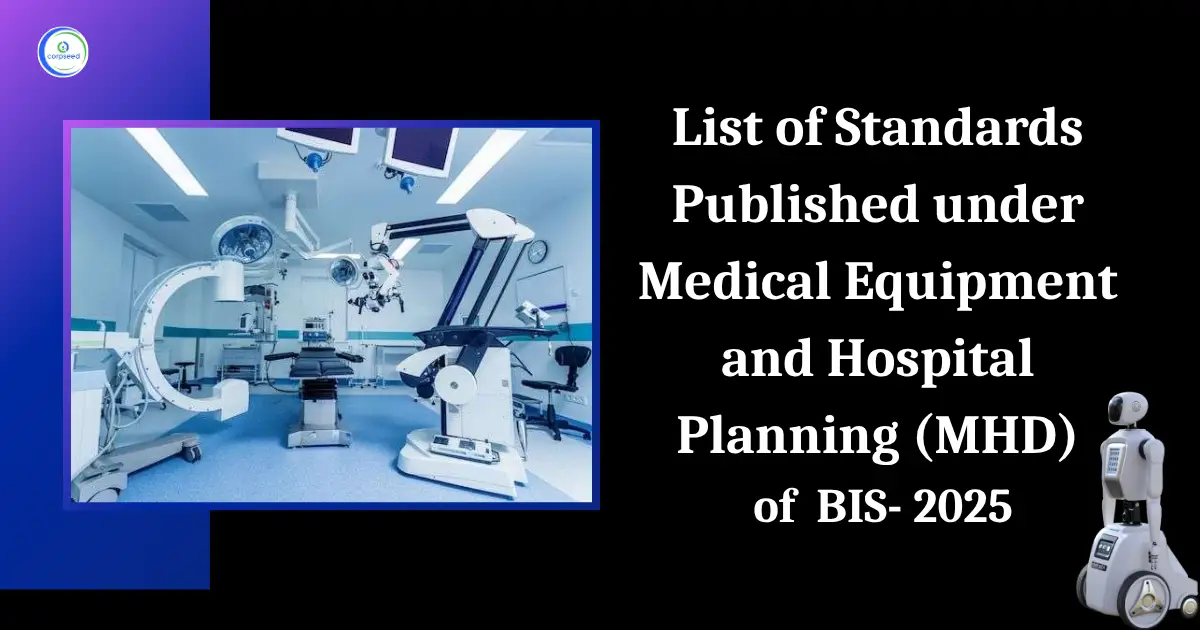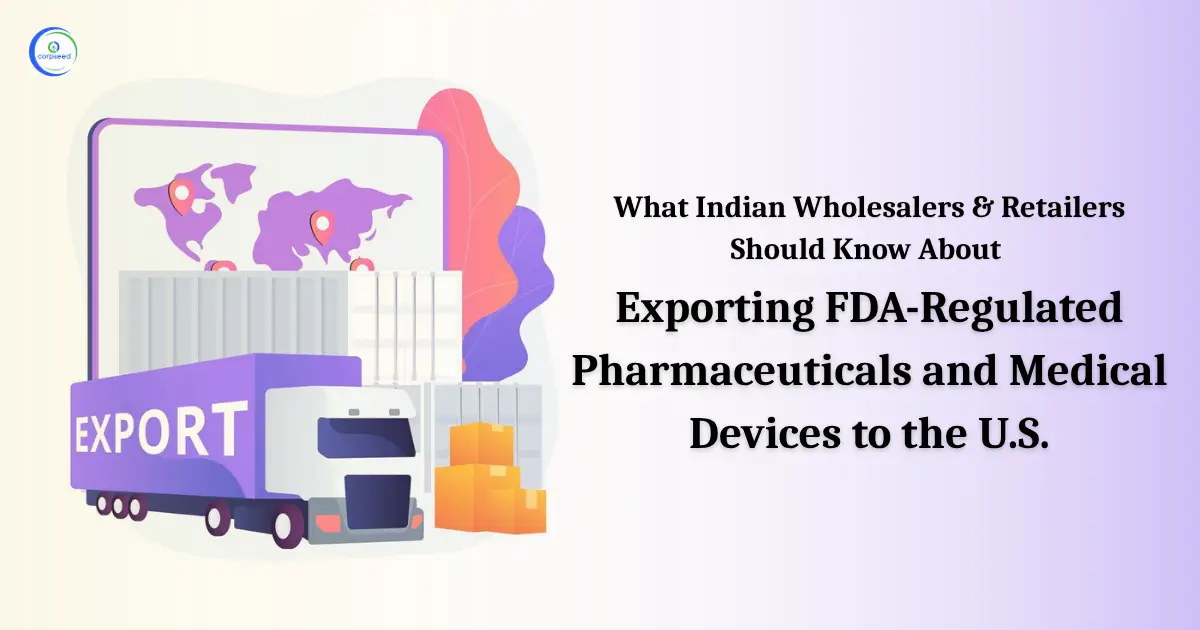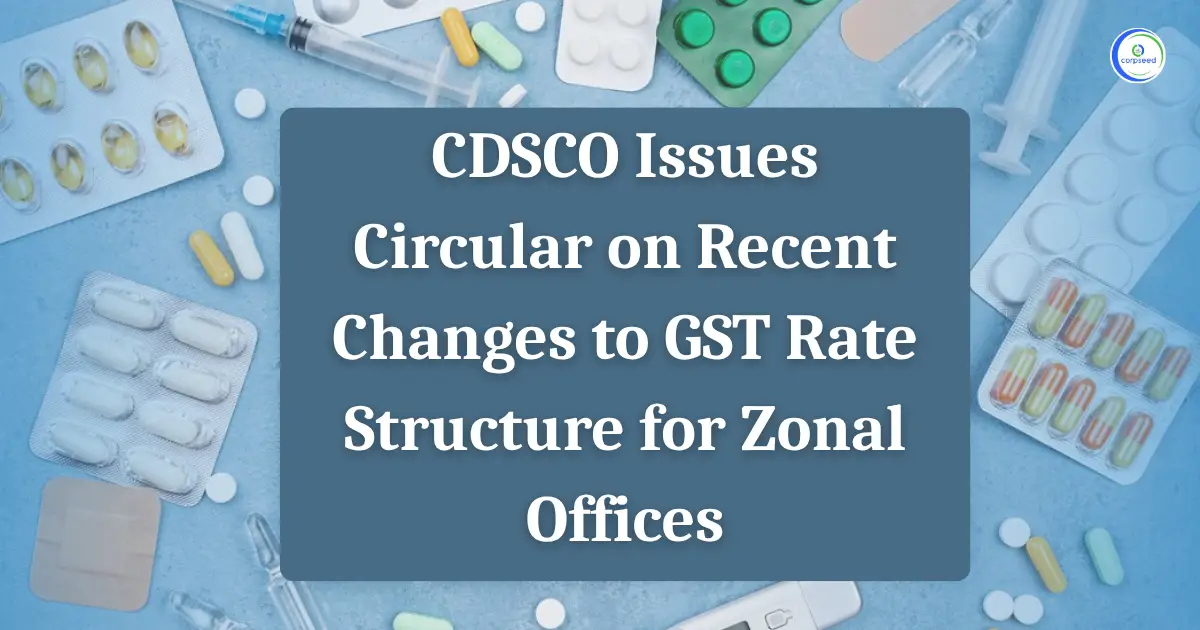A Brief Introduction of Respiratory
A respiratory therapist is a skilled healthcare professional with training in critical care, cardio-pulmonary medicine, and pulmonary disease who works therapeutically with patients who have these conditions. A respiratory therapy degree from a college or university and passing a national certification exam are requirements for respiratory therapists. Certification as a CRT (certified respiratory therapist) or RRT is handled by the NBRC (National Board for Respiratory Care) (registered respiratory therapist), CPFT and RPFT (Certified or Registered Pulmonary Function Technologists), ACCS (Adult Critical Care Specialist), NPS (Neonatal/Paediatric Specialist), and SDS are some of the specialty certifications for respiratory therapy (Sleep Disorder Specialist).
Table of Contents
- A Brief Introduction of Respiratory
- What is a Medical Device?
- Types of Medical Devices in India
- Eligibility Criteria for Medical Devices Registration/Import
- Process & Fee for Medical Devices Registration
- Documents Required to be Attached
- Time Involved & Validity for Registration
- Re-registration or Renewal of the Registration Certificate
- Post-Compliances after Receiving Registration
- How to Register Any New /Additional Medical Device If Medical Device Registration Obtained Already?
--------------Blog Contact Form-------------
From 1st of October 2022, the said medical devices having risk class A and B will be covered under the licensing regime of CDSCO. Once the devices are under the scope of licensing regime of CDSCO, all the importers and manufacturers of the said devices will have to apply for the license in order to sell their products in Indian Market.
The Respiratory category consist of total 63 medical devices which are classified on the basis of their risk class and intended use. Out of which only class A and class B medical devices will fall under the licensing regime from 1 October 2022. The CDSCO listed medical devices are as below mentioned
| RESPIRATORY | |||
| S.No. | Medical Device Name | Intended use | INDIA |
| 1 | Activated-oxygen generator | It is a device that makes activated oxygen (singlet oxygen) which is mixed with room air and produces activated water as a by-product. | B |
| 2 | Aerosol inhalation monitor | It is a device that enables a medical professional to objectively assess in detail how the test subject uses their inhaler. | B |
| 3 | Airway device cleaning utensil | A hand-held device intended to be used to clean an in situ and ex situ airway device. | A |
| 4 | Airway tube forceps | A hand-held instrument used for grasping a tube for its insertion and/or extraction into/from the airways, or for grasping obstructive objects for their removal from the airways. | A |
| 5 | Argon gas analyzer | An instrument intended to measure the concentration (partial pressure) of argon (Ar) in a gas mixture sample to aid in determining a patient's ventilatory status. | B |
| 6 | Artificial airway tube cuff pressure monitor | A device intended to intermittently or continuously measure the internal pressure in the cuff of an endotracheal (ET)/endobronchial/tracheostomy tube when this has been situated into the tracheal passage. | B |
| 7 | Breathing circuit bag | A device intended to store breathing gas during the respiratory cycle. | A |
| 8 | Bronchoscope | An endoscope with an inserted portion intended for the visual examination and treatment of the trachea, primary bronchi, and upper regions of the lungs and take biopsies and sample of secretions. | B |
| 9 | Bulk oxygen concentration system | An assembly of devices designed to concentrate medical grade oxygen (O2) from ambient air and then deliver the concentrated O2, with purity of up to 93%-99.5%, to the hospital medical gas supply system for therapeutic use on patients in Hospital. | A |
| 10 | Cardiopulmonary resuscitation mask | A device that intended to be placed over a patient's mouth to administer "mouth-to-mask" exhaled air from the user to the patient during cardiopulmonary resuscitation (CPR). | A |
| 11 | Cerebral oximeter | A device used as an adjunct monitor for the regional haemoglobin oxygen saturation of blood in the brain of a patient. | B |
| 12 | Chest-oscillation airway secretion-clearing system | Devices designed to provide high frequency chest wall oscillation (HFCWO) for external chest wall manipulation intended to loosen excessive airway secretions to promote airway clearance and improve bronchial drainage for patients with respiratory disease. | B |
| 13 | Chest-percussion airway secretion-clearing system | Devices designed to provide external mechanical percussion (rapid tapping) to the chest wall of a patient to loosen excessive airway secretions to promote airway clearance and improve bronchial drainage for patients with respiratory disease. | B |
| 14 | Cold-air diagnostic inhalation system | An assembly of devices intended to be used in the assessment of a pateint suffering from asthma. | B |
| 15 | Cough long-term ambulatory recording system | An assembly of devices intended for long-term detection and recording of the number of times a patient coughs during daily activities or sleep. | A |
| 16 | Cricothyrotome | A hand-held manual surgical instrument intended to be used to perform a cricothyrotomy providing airway access within seconds for immediate ventilation of the patient and necessary suction procedures. | B |
| 17 | Diagnostic spirometer | A device designed to measure several or all respiratory-gas volume and flow parameters needed to evaluate basic pulmonary function. | B |
| 18 | Dry powder inhaler | A hand-held device designed to administer powdered medicine through the mouth and into the bronchial airways. | A |
| 19 | Dry salt therapy device | A hand-held inhaler prefilled with salt crystals and used to provide an inhalation of salt particles through the mouth and into the bronchial airways to induce natural self-cleansing mechanisms that flush away the impurities from the surface of cells and mechanically clean the airways. | A |
| 20 | Electroacoustical airway secretion- clearing system | An assembly of devices designed to provide externally applied vibrations to the chest wall of a patient via an electroacoustical transducer (the applicator) to loosen excessive airway secretions to promote airway clearance and improve bronchial drainage for patients with respiratory disease. | B |
| 21 | Electronic oesophageal stethoscope | An electronic listening device designed to be inserted into a patient's oesophagus to listen to heart and breathe sounds, typically while the patient is under anaesthesia. | B |
| 22 | Endotracheal tube introducer | A device designed to help with the insertion of an endotracheal (ET) tube into the airways of a patient during intubation | A |
| 23 | Exhaled-gas oesophageal intubation detector | A device designed to verify proper endotracheal (ET) tube placement by detecting/assessing escaping levels of exhaled carbon dioxide (CO2) during airway management disclosing potential incorrect intubation. | A |
| 24 | Foetal pulse oximeter | A photoelectric device designed for the monitoring of intrapartum foetal oxygen saturation (FSpO2) in the presence of a non-reassuring foetal heart rate (FHR) pattern during labour. | B |
| 25 | Gas pipeline/supply system air compressor | A device designed to create compressed medical grade air, and supply it to a hospital or institution's gas pipeline/supply system for patient use. | A |
| 26 | Heated respiratory humidifier | A device designed to heat and humidify air/oxygen inspired by a patient to help maintain the mucous membranes of the respiratory tract typically during periods of prolonged respiratory support/therapy. | B |
| 27 | Home-use sleep apnoea recording system | A device intended to continuously measure and record patient physiological parameters during sleep in the home, to facilitate the diagnosis of sleep apnoea. | B |
| 28 | Hypopnea sensor/alarm | An electronic device intended to be used to indicate patient hypopnea by monitoring the movement of the thorax and abdomen with each breath and provides a signal, according to predetermined settings. | B |
| 29 | Impedance pneumography recording/analysis system | An assembly of electronic devices intended for continuous recording of a patient’s pulmonary function parameters using impedance pneumography (IP). | B |
| 30 | Infant apnoea monitor | A device that is used to register the respiratory rate of an infant and which gives an alarm signal (e.g., audible/visual) when the pre-set limits are exceeded caused by an extended interruption or cessation (apnoea) of the infants breathing pattern; a condition known as sudden infant death syndrome (SIDS). | B |
| 31 | Intracardiac oximeter | A photoelectric device designed to transmit radiation at a known wavelength(s) through blood to measure the concentration of oxygen, or dye, within the heart based on the amount of reflected or scattered radiation. | B |
| 32 | Intravascular oximeter | An instrument designed for the continuous in vivo measurement of venous blood oxygen saturation (SvO2). | B |
| 33 | Invasive arterial pressure cardiac output/oximetry monitor | A device intended to continuously measure and display arterial pressure cardiac output (APCO) and haemoglobin oxygen saturation (e.g., SpO2) | B |
| 34 | Manual chest percussor | A hand-held device designed to facilitate manual percussion (rapid tapping) to provide external vibrations to the chest wall of a patient to loosen excessive airway secretions to promote airway clearance and improve bronchial drainage for patients with respiratory disease. | B |
| 35 | Medical/surgical string | A sterile slender cord or thick thread, medical grade, designed to temporarily lift vessels, hold tracheostomy tubes in place, or assist in stabilizing various organs, medical instrumentation and accessories | B |
| 36 | Monitoring spirometer | A device designed to measure continuously a patient's tidal volume or minute volume for the evaluation of the patient's ventilatory status. | B |
| 37 | Nitrogen monoxide analyser | A device intended to measure nitric oxide (NO), in exhaled air to facilitate diagnosis and management of asthma. | B |
| 38 | Nitrous oxide analyser | An instrument used to measure the concentration of nitrous oxide (N2O) in a sample of a gas mixture taken from an enclosed environment such as a healthcare facility, a compressed medical air or gas system, and/or devices used for anaesthesia administration or respiratory therapy. | B |
| 39 | Oxygen concentrator | A device designed to concentrate oxygen (O2) from ambient air and deliver the concentrated O2 to patient. | B |
| 40 | Pneumatic chest percussor | A hand-held pneumatic device designed to provide external vibrations to the chest wall of a patient to loosen excessive airway secretions to promote airway clearance and improve bronchial drainage for patients with respiratory disease. | B |
| 41 | Public respirator (2 ply, 3 ply face mask) | A filtering mask designed to be placed over the nose and mouth of a member of the general public to permit normal breathing while protecting the wearer from exposure to pathogenic biological airborne particulates during a public health medical emergency. | B |
| 42 | Pulmonary function analysis system | A device used to measure the function of the respiratory system in adults and compliant children. | B |
| 43 | Pulse oximetry telemetric monitoring system | An assembly of devices designed to continuously measure and wirelessly transmit haemoglobin oxygen saturation (SpO2) signals from a patient to a receiving location for viewing. | B |
| 44 | Respiration monitor | A device designed to measure and display a non-ambulatory patient's respiratory functions. | B |
| 45 | Respiratory apnoea monitoring system | An assembly of devices designed to detect the cessation of breathing (apnoea) in patient who are at risk of respiratory failure to alert a parent or attendant of the life-threatening episode(s). | B |
| 46 | Steam inhaler | An electrically-powered, hand-held device designed for the inhalation of steam for the relief of the symptoms (congestion and pressure) associated with upper respiratory disorders. | A |
| 47 | Stress test treadmill | A device used as a component of a stress test system that permits the evaluation of a patient's physiologic response to physical stress. | A |
| 48 | Therapeutic air ionizer | A device that produces small, biologically-active, negatively-charged ions of oxygen (O2), pulsed at various selected frequencies, that are emitted into the ambient air and absorbed into the bloodstream via the lungs to potentially produce a therapeutic effect. | A |
| 49 | Thoracic bioconductance measurement system | An assembly of devices designed to measure and store bioconductance measurements, analyze the stored data, and provide information that can aid a clinician in their evaluation of lesions suspicious of lung cancer. | B |
| 50 | Thoracic electrical impedance segmentography system | An assembly of devices designed to perform thoracic bio-impedance measurements to continuously record the distribution of air across 4 quadrants of the lungs, commonly of a neonatal/infant patient to detect changes in lung ventilation at a regional level, to assist in the diagnosis of lung conditions. | B |
| 51 | Thoracic suction pump | A device intended to generate negative pressure specifically for aspiration, to remove fluids, secretions, and air to allow for the normal expansion/function of the lungs and/or mediastinum. | B |
| 52 | Tongue-adjustment sleep apnoea treatment system | An assembly of devices intended for home management of obstructive sleep apnoea (OSA) by monitoring breathing parameters during sleep to detect the onset of an apnoea event and reduce pharyngeal obstruction by the tongue. | B |
| 53 | Tracheostoma protective filter | A device designed as a filter for protecting a stomal opening in the windpipe against harmful external influences. | A |
| 54 | Tracheostoma protector | A patient-worn device in the form of a patch, collar, or cloth designed to be fastened around the neck to protect a tracheostoma orifice against harmful external influences. It is not intended to be used as a shower shield. | B |
| 55 | Tracheostomy tube lubricant | A substance made of oil designed to be applied by healthcare staff or a patient to the outer surface of a tracheostomy tube inner cannula to facilitate its easy sliding into the outer cannula. | B |
| 56 | Tracheotome | A surgical instrument designed to cut an opening into the trachea (windpipe) through the anterior surface of the neck to create an artificial airway (tracheotomy). | B |
| 57 | Transcutaneous blood gas monitoring system | An assembly of devices designed for the continuous and transcutaneous measurement of a patient's blood gas parameters detected through the jugular vein (SjvO2). | B |
| 58 | Ultrasonic cough stimulation system | An assembly of devices designed to stimulate a reflex cough using ultrasound in a patient who cannot cough on command, typically respiratory patients with cortical insufficiency or the very young/elderly, to help clear the lungs of secretions and aspirated materials. | A |
| 59 | Ultrasonic respiratory humidifier | A device designed to agitate water into micro-particles with ultrasound to add moisture to the flow of air/gases administered to a patient via a breathing tube/circuit. | B |
| 60 | Vacuum-assisted airway secretion-clearing system | A device assembly designed to remove excessive secretion from the lungs and upper airway of patients with respiratory disease or during cardiac rehabilitation through vacuum technology. | B |
| 61 | Valsalva manoeuvre mouthpiece | A device intended to be inserted into a patient's mouth to facilitate the performance of the Valsalva manoeuvre. | A |
| 62 | Video intubation laryngoscope handle/monitor | A component of a bladed video intubation laryngoscope intended to enable the positioning of the blade into the oral cavity to manipulate the tongue, preventing it from obstructing the oropharynx and enabling a clear view of the trachea for the insertion of an endotracheal (ET) tube prior to the delivery of inhalation anaesthesia and/or ventilation. | A |
| 63 | Whole-body plethysmograph | A graphic recorder designed for determining and registering airway resistance and thoracic gas volume to assess pulmonary function. | B |
Central Drugs Standard Control Organisation:
India is growing as one of the nation's leading the pharmaceutical businesses and is among the top ten nations in terms of the pharmaceutical industry. Several factors such as a large population, growing health awareness, affordable medical facilities, and better research facilities have given rise to the manufacturing and development of pharma business in India. However, with the increasing scope for the growth of the pharma industry in India, there are possibilities for the sale/purchase of medical equipment & device illegally or without jurisdiction. Therefore, the Government of India has established the Central Drug Standards Control Organization (CDSCO), which is the primary legislative body and has been responsible for the regulation, control, and management of pharmaceuticals and medical devices in India apart from the appointment of the Drug Controller General of India (DCGI), and has conferred the responsibility of undertaking assessment, approval and regulation of further compliances(import, export, sale, distribution) in the matters of medicinal drugs and medical devices(including any existing or any new) drugs/devices in accordance with the provisions of the Drugs and Cosmetics Act 1940.

What is a Medical Device?
According to the latest definition as provided under the Medical Devices Amendment rules 2020, as notified on 11.02.2020. However, taking care of circumstances the government has exercised its powers to include more categories by widening the scope of the definition of “Medical Device” under the Act. It states-
"Devices used in general medical practice such as medical apparatus, instruments, implants appliance, etc., which are either used individually or in combination, and are intended to be specifically applied for human beings or animals and are further intended to obtain the desired function by such means and for such purposes as provided below, but is not intended to meet the primary intended action on human body or animals by any pharmacological or immunological or metabolic means-
- Analysis, prevention, observing, treatment, or mitigation of any disease or disorder;
- Analysis, observing, treatment, mitigation, or support for any injury or disability;
- Examination, replacement or alteration or support in findings of the anatomy or a physiological process;
- For supporting or sustaining life;
- Decontamination of medical devices; and
- Conception related equipment’s & devices.
Therefore, every manufacturer or importer or both of any medical devices in India shall be required to obtain registration as per the provisions of the Drugs and Cosmetics Act 1940. Any failure to comply with the same may invite legal action including penalty & prosecution under the Act.
Types of Medical Devices in India
Provisions related to the import, manufacture, sale & distribution of medical devices are regulated under the provisions of the drug and cosmetics Act 1945. Under the New Medical Rules 2017, all medical devices have been classified into four different categories depending on their usability & risk involved as provided below.
- Class A:- Low-risk devices like a thermometer, tongue depressors, etc.
- Class B:- Low moderate risk like Hypodermic Needles, suction equipment, etc.
- Class C:- Moderate high-risk devices like Lung ventilator, etc.
- Class D:- High-risk devices like Heart valves, implantable devices, etc.
Where Class A & B devices are considered to be less risky and moderate devices, for which the application to manufacture has to be filed to the State Licensing Authority. Whereas Class C &D are considered to be high and very High-risk devices and the application for these has to be filed to the Central Licensing Authority of India.
Eligibility Criteria for Medical Devices Registration/Import
The provisions related to activities such as Import, manufacture, sale, and distribution of medical devices have been regulated under the provisions of the Drugs & Cosmetic Act 1940 & Rules 1945. Therefore, any person/firm/enterprise, etc. holding a wholesale drug license and/or manufacturing license issued under the Drugs and Cosmetics Act, 1940 and Rules 1945 could make an application for Registration and import of medical devices into India.
Process & Fee for Medical Devices Registration
Types of Medical Devices Registration
- Registration/Import of any existing medical device;
- Registration /import of any new medical device
Step 1: Determine Whether Your Medical Device Is Under Notified List or Not
The CDSCO authority has provided a list of notified medical devices that need to compulsorily obtain registration under the Drugs and Cosmetics Act 1940 and in accordance with Medical devices rules 2017. However, there may be any medical devices that have not been expressly notified by the CDSCO authority, or in case of new medical equipment, the manufacturer/importer shall be required to obtain a NOC in such cases. For instance, Blood Grouping Sera Ligatures, Sutures, Staples Intra-Uterine Devices (Cu-T), Condoms, Tubal Rings, Surgical Dressing, Umbilical Tapes, Blood / Blood Component Bags do not need registration, whereas devices such as spinal needles, cochlear implants, syringes, and needles, heart valves, endotracheal tubes and catheters among others should undergo registration provides with the CDSCO.
Step 2: Appoint an Authorized Representative (in case of Foreign Entity)
For a foreign business manufacturer entity, it shall be necessary to appoint an authorized business entity in India, who shall be the contact person for the inspection authorities during the process, assist in device approvals, and registrations process, and vigilance adverse event reporting. The Indian Authorization should hold a wholesale drug license in forms 20B& 21B.
Step 3: Fill out the Applicable Form for Medical device Registration
In the next step, the manufacturer/importer for MD shall be required to submit the registration form of a regulatory dossier, along with all the prescribed documents along with the prescribed fee on the CDSCO portal to the DGCI (Drugs Controller General of India) by logging on to the online CDSCO portal https://cdsco.gov.in/opencms/opencms/en/Home/ and signing into the portal.
Following forms along with applicable govt. fees have been provided below, which shall be required to be paid through payment challan-
| Applicant Type | Class of MD | Application Form | License Form |
| Importer | A,B,C,D | MD-14 | MD-15 |
| Manufacturer | A B | MD-3 | MD-5 |
| Manufacturer(Loan License) | A B | MD-4 | MD-6 |
| Manufacturer | C, D | MD-7 | MD-9 |
| Manufacturer(Loan License) | C, D | MD-8 | MD-10 |
However, in the case of new equipment or medical device-
| Application Type | Class of MD | Application Form | License Form |
| Importer Clinical Investigation | A,B,C,D | MD-22 | MD-23 |
| Import License | A,B,C,D | MD-26 | MD-27 |
| Test License(for importer) | A,B,C,D | MD-16 | MD-17 |
| Manufacturer (Clinical investigation) | A,B,C,D | MD-22 | MD-23 |
| Manufacturer License | A,B,C,D | MD-26 | MD-27 |
| Test License | A,B,C,D | MD-16 | MD-17 |
Further, each application shall be supported with the list of documents and the requisite fee as provided in the online portal of CDSCO-
| Type of License | Class of Device | Applicable Regulation | Govt. Fee |
|
For Manufacturing/Loan License
|
A or B; | 20(2) | Rs. 5000 Rs. 500 |
|
For Manufacturing/Loan License
|
C or D; | 21(2) | Rs. 50,000 Rs. 500 |
|
For Import License(other than IVD)
|
Class A | 34(2) | 1000 Dollar 50 Dollar |
|
Import License(other than IVD)
|
Class B | 34(2) | 2000 Dollar 1000 Dollar |
|
Import License (in IVD)
|
Class A or B | 34(2) | Rs. 1000 Rs. 10 |
|
Import License (other than IVD)
|
Class C or D | 34(2) | 3000 Dollar 1500 Dollar |
|
Import License(in IVD)
|
C or D | 34(2) | 3000 Dollar 500 Dollar |
Step 4: Obtain Certificate of Registration in Prescribed form
Once the application is submitted on the CDSCO portal, the DGCI registration authority may send a query through an inquiry letter to the manufacturer or from the authorized representative of the importer, along with the timeline within which the query should be answered and sometimes, may also ask for a technical presentation On satisfaction the authority may issue a license in such form as provided in the above list. After obtaining registration, the manufacturer or his authorized representative may apply for an importer license.
Documents Required to be Attached
- Form 40
- ISO 13485 certificate
- Full Quality Assurance Certificate
- CE Design Certificate
- Undertaking that all information provided is authentic
- Either a Free Sale Certificate or Certificate from the Foreign Government
- Certificate of Marketability from GHTF (Australia, Canada, Japan, the European Union, and the United States);
- Plant Master Report
- Device Master File
Time Involved & Validity for Registration
If the DGCI doesn’t ask for a Technical Presentation or Subject Expert Committee (SEC) audit, it takes around 6-9 months to obtain a Medical Devices Registration. In cases where Technical Presentation or Subject Expert Committee (SEC) audit, is required, it may take additional 3-6 months.
Once obtained the Registration Certificate shall be valid for a total period of 3 years from the date of issue of registration unless suspended or cancelled by the DGCI authority for proper causes.
Re-registration or Renewal of the Registration Certificate
The application for renewal of the MD registration certificate shall be made at least nine months from the expiry of the registration certificate. Though there are no additional requirements for the renewal of registration, it shall be necessary for the certificate holder to provide a copy of the Plant Master File (PMF) and Device Master File (DMF), where there are no changes in the PMF and DMF,
Post-Compliances after Receiving Registration
Though there are not many compliances in place about the registration certificate, it shall be compulsory for the certificate holder to-
- In case of any change that has taken place about the constitution of the firm and/or address of the registered office/factory premises, the MD manufacturer/authorized representative of the importer to intimate the licensing authority regarding the same in writing;
- In case any such change has taken place, the existing registration certificate shall be valid for a maximum period of three months from the date on which the change has taken place, and during this time, the manufacturer/authorized representative shall be required to obtain a fresh Registration Certificate;
How to Register Any New /Additional Medical Device If Medical Device Registration Obtained Already?
In case an importer wants to obtain registration for manufacturing of any additional manufacturing device, then such person shall be required to obtain an endorsement to the existing Registration Certificate along with the prescribed documents holding that manufacturing of an additional device is being undertaken in the manufacturing site as provided in the registration certificate along with a fee of 1000 dollars fee for each additional device.
Drug License
A drug license is an official permission granted to individuals or companies that manufacture, distribute, and sell drugs in India. It ensures adherence to the safety and quality standards of the regulatory authorities that ensure public health.
Medical Devices Import/Manufacturing
CDSCO online registration is a process that ensures that all the drugs, medical devices, and cosmetics in the market are safe, reliable, and must have passed quality standards. Importers, manufacturers, and others must register under the CDSCO for a certificate if they are working in this field.
Medical Devices Import
The CDSCO is responsible for medical device registration in India. This registration guarantees that all devices are safe, of high quality, and comply with regulatory standards. This registration not only protects patients but also supports global trade.
This portion of the site is for informational purposes only. The content is not legal advice. The statements and opinions are the expression of author, not corpseed, and have not been evaluated by corpseed for accuracy, completeness, or changes in the law.
BOOK A FREE CONSULTATION
Get help from an experienced legal adviser. Schedule your consultation at a time that works for you and it's absolutely FREE.




